Posted By: bjansma
Insurance company wants a letter - 09/19/14 11:44 PM
Recently got bats out of a house. Guano in the attic is a couple of inches deep. The homeowners filed a claim and the insurance company wants to deny based on the fact that it was a preexisting condition. They have lived in the house and had the same insurance company for 8 years. I am pretty sure they aren't going to get out of paying here but give them credit for trying.
They are asking for a letter from me giving my opinion of how long the bats have been there. Anybody know how to tell the age of guano?
Posted By: Throw Back
Re: Insurance company wants a letter - 09/20/14 12:03 AM
Don't just look at guano, but extent of all damage etc. Sure u could math it up. How many bats pooping how ofent would wit take to make x amout of poop
Posted By: DaveK
Re: Insurance company wants a letter - 09/20/14 12:42 AM
They want you to speculate? Perhaps, you are only qualified to state what you see now and clean up the attic.
Posted By: DaveK
Re: Insurance company wants a letter - 09/20/14 01:37 AM
Besides....you have to ask yourself....at what point did the "damage" occur? Was it after 1 drop of poo? Or, did it take 2 inches before the damage occurred? It seems that the damage (if any) would have occurred in recent years....rather than have occurred at the 1 drop of poo stage....whenever that was....
Posted By: HD_Wildlife
Re: Insurance company wants a letter - 09/20/14 01:50 PM
If you write your educated best answer and they don't like it I'd imagine they'll just get another opinion that voids your response.
I've been asked this by agents, guano is more subjective than say insulation board (black fiber stuff), which can take years to degrade depending on colony size and other factors.
Too many issues in estimating from the guano.
Permanent colony that is only using this structures and numbers 100+ individuals, seasonal use colony numbering 10-20 total bats...
I've seen guano in attics that were gutted 3 years before where the guano had the look of soil profiles. Very cool but rare that it is that obvious.
Since they've had the house and same insurance should be a done deal, no way they are going to disprove your statements in terms of a 2 year or a 10 year issue.
Just .02
Posted By: DaveK
Re: Insurance company wants a letter - 09/20/14 02:15 PM
Just wondering if anyone can define "damage".
Posted By: Paul Winkelmann
Re: Insurance company wants a letter - 09/20/14 09:23 PM
How about that. You got the perfect guy to define "damage". The first syllable of the word is "dam". And unless man made, is usually
caused by beavers. They normally causes flooding, tree cutting, and some of the most irate customers and language you have ever
heard! The second syllable is "age". And this where all the problems start. Since most of us ( including 'yours truly' ) can catch
more dollars worth of, let's say, chipmunks, in a shorter amount of time, why would I want to catch beaver? Now here comes the age
thing. You get this really nice secretary telling you that people will love you forever if you catch their beavers, and the next
thing you know, you're gathering up the 660s and heading for the lake. That's the true definition of "damage".
Posted By: Eric Arnold
Re: Insurance company wants a letter - 09/21/14 02:37 PM
I would define damage in regard to structures as a physical change to any object or material that interferes with the object or material from performing the task it was installed to perform. Examples of this would include holes in siding, missing or broken shingles, compressed insulation, bent soffit panels, etc.
The question is not if the item or material is damaged, but rather what caused the damage. If a soffit panel was removed allowing access to the roof/soffit area to raccoon, squirrels, and birds, it's hard to say the soffit is damaged as there is no physical change to the panel that was removed. However, if the panel was bent due to wildlife, construction accident, or weather and fell out, now a case can be made that damage occurred to the soffit, even if it was just the one panel.
In terms of insulation, damage will be determined by the type of insulation. Hard or spray insulation will require physical damage such as chewing or breaking whereas blown in or batt insulation will require compression or removal. The difference is because of the different insulating properties each type of insulation has. To focus on blown in and batt insulation, insulating properties occur based on air being trapped between the insulating fibers. A specific amount of insulation is required to achieve the desired R factor. This amount will be based on the type (denim, cellulose, fiberglass, etc.) of insulation being installed.
In terms of bats causing damage to insulation, it depends on multiple factors such as the type of insulation, as previously stated, the amount of insulation present, and where the damage is located (i.e., by the chimney only, along the ridge board, or throughout the entire attic). The following examples will be based on a pile of guano that is 24 inches x 8 inches x 1 inch. Starting with hard board insulation, I would argue that no damage from the guano has occurred as no physical harm to the hard board was done. However, once the guano has been removed there may be harm from urine which would be evident by staining. A very similar situation occurs with batt insulation when the backing is facing up. Although the guano does not have enough weight to compress the insulation and inhibit the insulating properties, the urine will soak into the backing and potentially into the fibers and can cause a change to the insulating properties. As for blown in insulation, I would argue that damage has occurred to the insulation from the guano as compression will have taken place along with urine damage. With all of these situations, the amount of any damage present is very small and would require only removal and replacement of that specific area with the possible exception of blown in insulation where damage is occurring when walking through the insulation to the area in question.
While the guano in the above examples is a small amount, I feel that the entire attic does not need to have the insulation removed due to bats urinating in flight. That doesn't mean that there isn't other conditions such as rodent trails, tunnels, or water damage that hasn't damaged insulation that needs removed, just that the damage wasn't caused by the bats. This is a common problem, from my perspective, that I come across every year. Two thousand plus square feet clean outs being quoted for anything from one piece of guano to several small piles each less than one square foot in size claiming that all the insulation is ruined when it isn't.
This makes it very important when writing up a proposal for a client or insurance company to make sure and justify why you feel the insulation needs removed, regardless of the damaged amount. Whatever the situation is, make sure to describe it. So list the amount of guano (very small amount to attic floor entirely covered) and if other damage is present include it by saying there is also damage from raccoon, squirrels, mice, etc. This way, you are saying that not only is this the problem you see, but also the solution to it. This helps greatly when a claims adjuster actually comes out and looks at the problem.
In terms of estimating the number of bats and/or time frame the damage occurred, understand that by giving this information you are now legally responsible to justify how you achieved that number. Having served as an expert witness in court cases regarding how many bats a structure contained and how long they were present, I can say first hand it isn't a fun experience to testify against another WCO/PCO company. The problem is the amount of droppings will depend on roost type, feeding success, amount of time using the roost, and the number of bats present.
A small colony of 10 bats over a 10 year period can give the same look as 100 bats in a single year. I've seen times where 300+ bats used a structure for less than one year leaving piles of guano that were 20 ft long 24 inches wide and 3/4 inches deep in four separate locations plus lots of individual pieces throughout a 4,000 ft attic so you could not step on the floor without stepping on guano. If this happened in 1,200 sq ft attic, you'd have a pile that was several inches deep in just a couple of months but giving it a look as if it was years of accumulation.
Generally speaking, a shotgun look to the guano can show either juvenile bats (where the maternity colony is elsewhere in the structure) or bachelor group activity whereas a sand timer look or pile accumulations revile a maternity site. To give an educated guess, not only do you need to know how many bats and how long, but you also need to know the type and amount of insulation that was present before the bat guano started. Sometimes this is very easy to know as you can see fluffy blown in insulation with an areas being pressed down with guano on top, but most of the time it isn't that simple.
If you need to provide a statement, it may be best to say that it is impossible for you to determine this information and that all you can say is what the current conditions are. Of course, if you also excluded the bats and have a good idea as to how many were using the structure you can give that information out and if the homeowner say's they've had bats for 5 years, then say "According to the homeowner..."
Posted By: bjansma
Re: Insurance company wants a letter - 09/21/14 10:04 PM
This was a 1200 sq ft attic and I have never seen more bats in one attic at one time, although I didn't attempt to count.
My original thought was that what the insurance company was asking for was impossible and from the responses I feel pretty confident that I was correct. Too many variables... My plan was to say that I didn't know.
I feel it is either an angle shoot on their part or they are just looking for something to stick in their file. Hard to discern people's motives sometimes.
The definition of damage can be a funny thing. I don't like the "fear based" selling. To many people out there selling the dangers of raccoon roundworm and histoplasmosis. I have been in attics where people are looking at an 8k estimate and I can find 4 pieces of guano. That is wrong to me.
Sometimes I think the work we do is to protect resale value or provide an "energy upgrade" and use the bat guano or raccoon feces as an excuse. I leave it up to the customer. I know that is not the insurance company's intent.
Posted By: DaveK
Re: Insurance company wants a letter - 09/21/14 11:19 PM
Thanks Eric...I was thinking along the same lines.
Bob...yes...it is a good practice to state what you see...and avoid speculating. Others can draw their own conclusions.
Posted By: Mike Barcaskey
Re: Insurance company wants a letter - 09/22/14 08:05 PM
all good thoughts, just make sure you charge them
Posted By: LAtrapper
Re: Insurance company wants a letter - 09/23/14 12:29 AM
Thanks Eric...I was thinking along the same lines.
Bob...yes...it is a good practice to state what you see...and avoid speculating. Others can draw their own conclusions.
Back it up what you see with video/pictures.
Guano on floor of attic
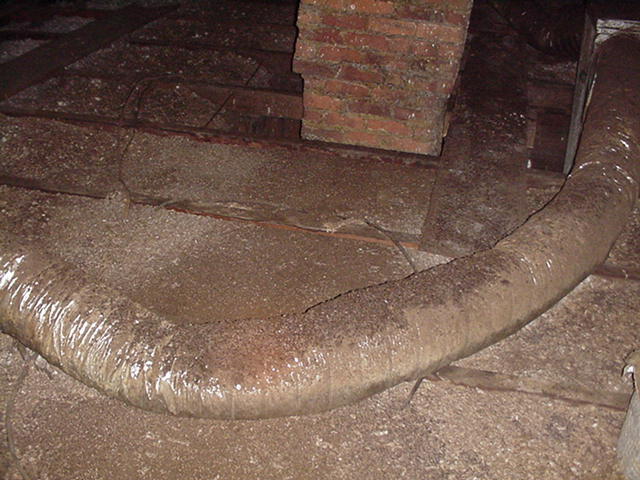
Front of Chimney
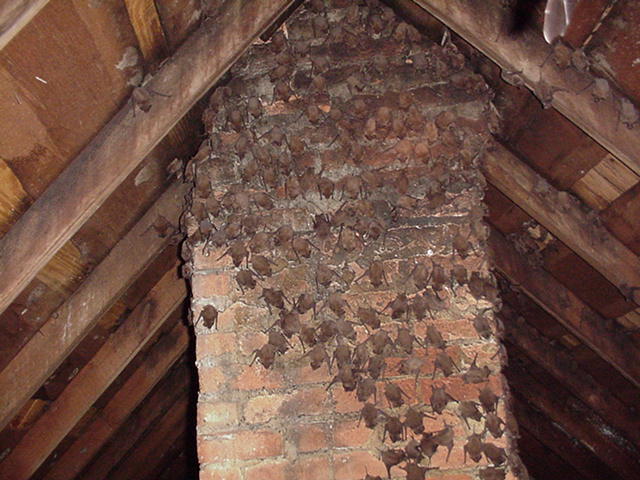
Back of chimney
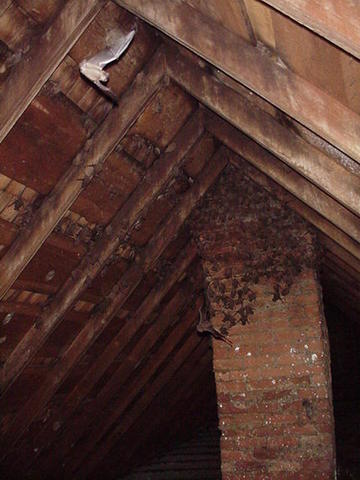
Inside of entrance
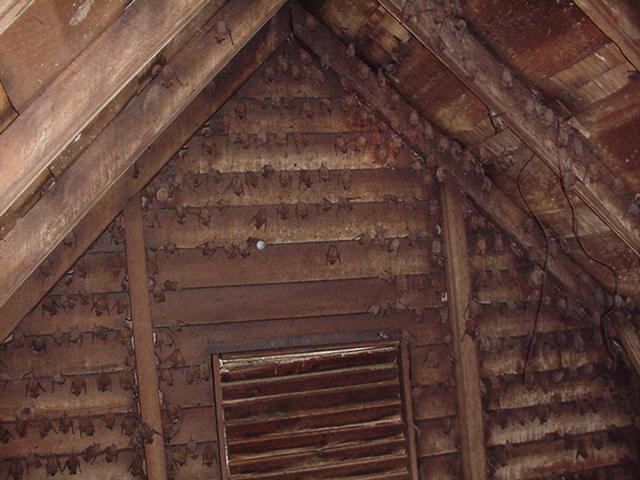
Entrance
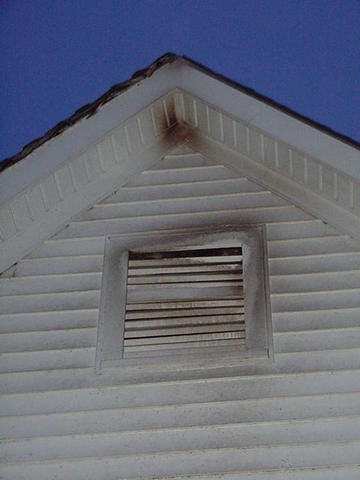
Posted By: Vinke
Re: Insurance company wants a letter - 09/23/14 01:05 AM
It is very common to be denied,,,
Ask that the claim be submitted to the next level
Use the phone to make contact on behalf of your client,,,,(Charge for your professional services)
If they feel they are being unjustly denied,,, bring it before the Insurance Commission of your state
Posted By: MuskratJoe
Re: Insurance company wants a letter - 09/23/14 01:45 AM
Wow! Some great photos!!!
Posted By: Paul Winkelmann
Re: Insurance company wants a letter - 09/23/14 02:32 PM
Do you guys realize how hard is to get a couple hundred bats to smile at the same time?
Posted By: Throw Back
Re: Insurance company wants a letter - 09/23/14 05:15 PM
Just as it was said that the insurance company will do anything to not get the claim, some would say that you should act as a defendant to the home owners. THEY asked YOU to SPECULATE! Could you reasonably speculate damage was recent?
Posted By: Budfish
Re: Insurance company wants a letter - 09/24/14 11:27 AM
Maybe if a home inspection was done 8 years ago when they purchased the house, the report would indicate if there was a bat problem in the attic. It would probably be better than you making an educated guess at when it started.
Posted By: DaveK
Re: Insurance company wants a letter - 09/24/14 12:04 PM
Why risk the perception of fraud? State what you see...no speculation.
Posted By: bjansma
Re: Insurance company wants a letter - 10/03/14 02:48 AM
Sent the letter saying no good way to age guano. My customers got a letter today saying a check would be coming their way.
Posted By: DaveK
Re: Insurance company wants a letter - 10/06/14 12:01 PM
So...it worked out without you sticking your neck out.




